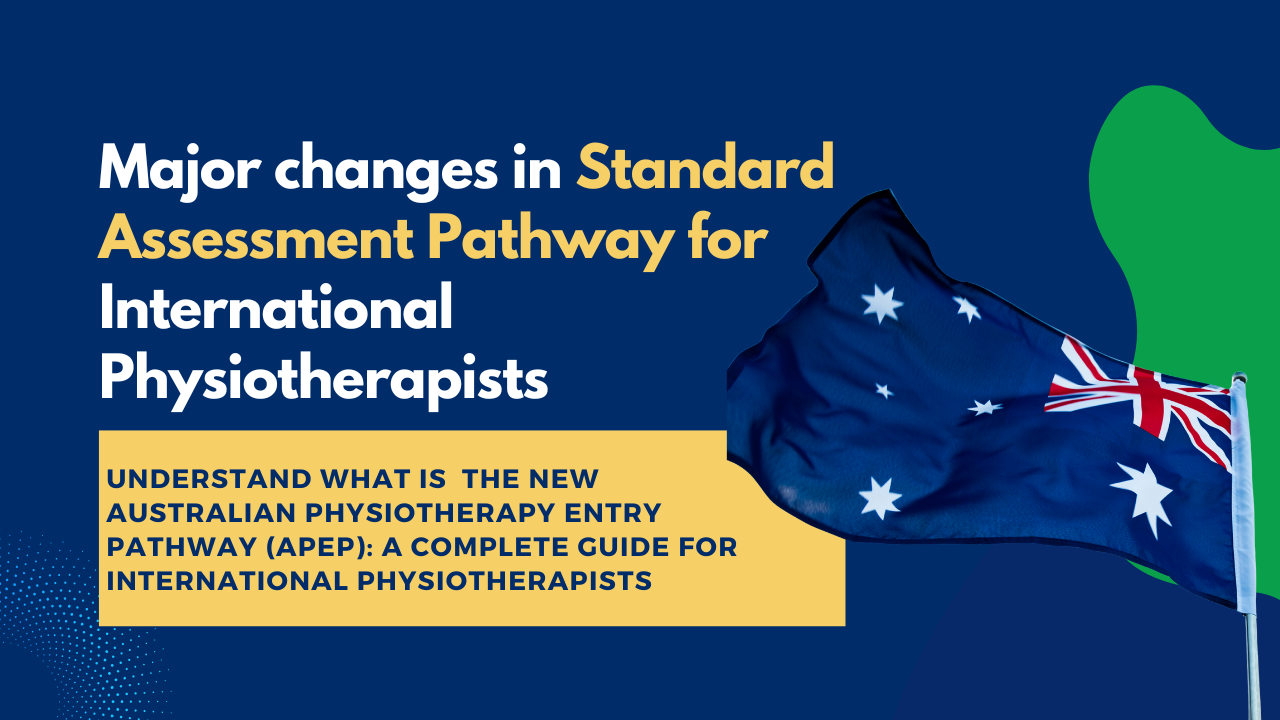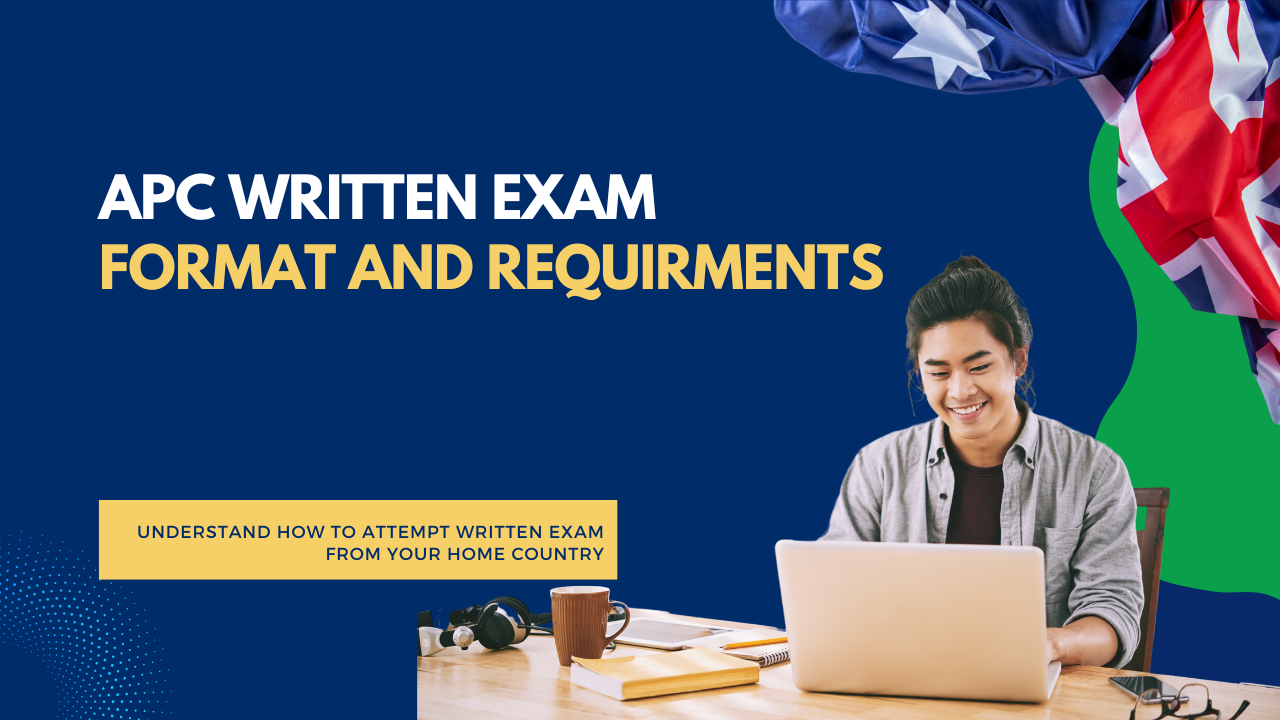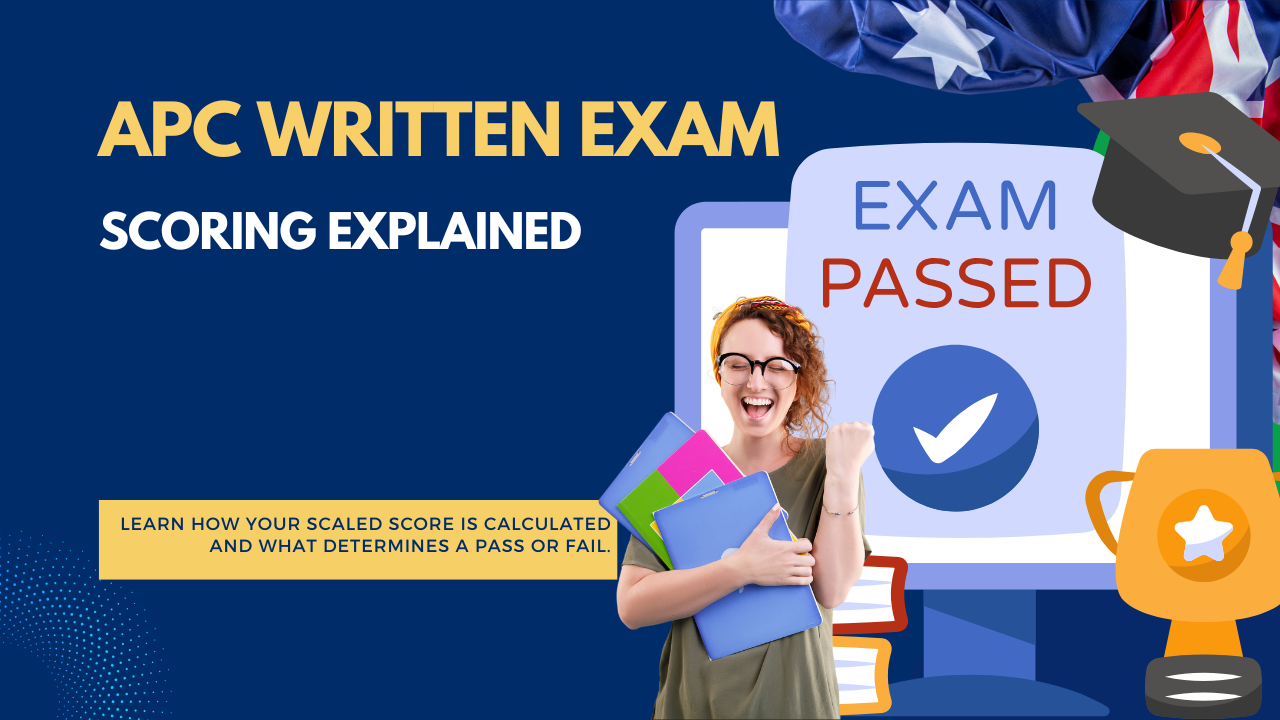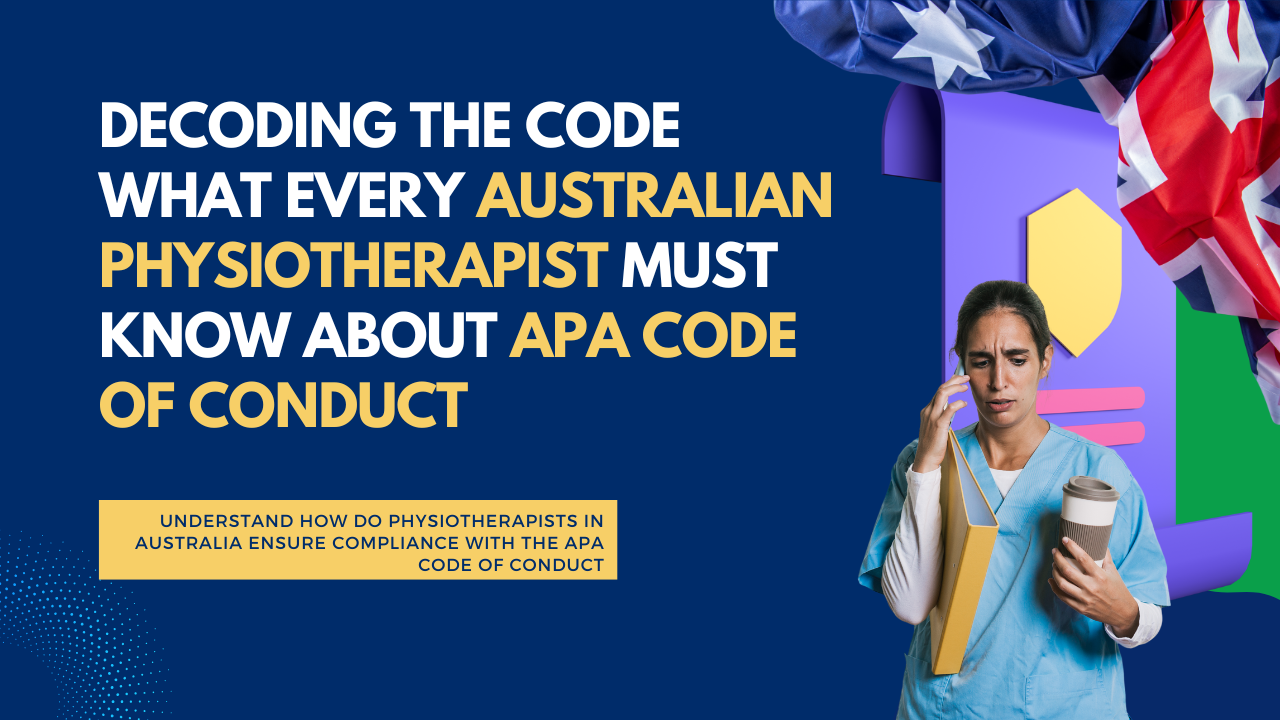The Physiotherapy Board of Australia has recently introduced updates to the supervised practice requirements to enhance the evaluation and reporting of supervised practice plans for physiotherapists. These changes, effective from January 28, 2025, are designed to create a more streamlined and effective approach to supervision, ensuring safe and competent physiotherapy practice. These changes are particularly relevant for physiotherapists under Physiotherapy AHPRA limited registration.
Overview of the Updates for Supervised Practice on AHPRA Limited Registration
The two primary documents that reflect these updates are:- Supervised Practice Requirements Update:
- The Board has officially announced that Section G in the supervised practice plan will no longer apply to general or limited registration. This represents a targeted change aimed at streamlining supervised practice processes.
- Supervised Practice Framework:
- This framework establishes the principles of supervised practice and delineates the roles and responsibilities of supervisees, supervisors, and employers. It also specifies various levels of supervision and offers guidance on how to meet registration requirements, conditions, or undertakings effectively.
Importance for Physiotherapists with Limited Registration
AHPRA Limited registration is typically granted to overseas-trained physiotherapists, recent graduates, or those requiring additional supervision to meet competency standards in Australia. For this group, the updated supervision requirements and framework are of paramount importance. Here’s why:- Clear Expectations:
- The revised framework explicitly defines the expectations for supervisees. This includes the competencies they need to demonstrate and the processes they must follow to progress under supervision.
- Structured Supervision:
- The inclusion of different levels of supervision, ranging from direct to indirect, allows supervisees to develop their skills progressively. This structured approach ensures that they can gradually take on more responsibility as their competencies improve.
- Enhanced Transparency:
- By clearly outlining the roles of supervisors and employers, the framework reduces ambiguity and fosters a supportive environment for learning and professional growth.
Changes Compared to Past Guidelines for Physiotherapists with AHPRA Limited Registration
The updated requirements and framework represent a significant shift from previous guidelines. Key differences include:- Discontinuation of Section G:
- Previously, Section G of the supervised practice plan was applicable to both general and limited registration. The removal of this section reflects a move towards more focused and relevant supervision requirements tailored to the needs of limited registrants.
- Comprehensive Framework:
- While earlier guidelines may have been less detailed, the new framework offers a holistic and detailed approach. It covers everything from the principles underpinning supervised practice to the specific expectations for all parties involved.
- Levels of Supervision:
- The introduction of distinct supervision levels—direct, indirect, and remote—provides a clearer pathway for supervisees to progress in their professional journey. This was less defined in earlier guidelines.
What Was Section G?
Section G was a specific component of the supervised practice plan form used by the Physiotherapy Board of Australia. The supervised practice plan was a mandatory document for physiotherapists under limited registration or those requiring supervised practice as a condition of their registration. Section G generally focused on “Supervisor’s Feedback and Progress Reports”, forming the basis for evaluating the supervisee’s development and readiness for independent practice. Here are the detailed aspects of Section G:- Purpose of Section G:
- It was designed to track and document the supervisee’s progress during the supervision period.
- It allowed supervisors to provide structured feedback based on the supervisee’s performance, identifying areas of competence and areas requiring improvement.
- The section facilitated communication between the supervisor and the Physiotherapy Board, ensuring accountability and transparency in the supervisee’s practice.
- Key Elements of Section G:
- Competency Assessment: Supervisors were required to evaluate the supervisee against specific competencies outlined by the Board. These competencies included clinical skills, communication, professional behavior, and adherence to ethical and legal standards.
- Frequency of Feedback: Section G mandated periodic reporting, often quarterly, depending on the supervision agreement. This ensured regular monitoring of the supervisee’s progress.
- Detailed Feedback: Supervisors were encouraged to provide detailed, constructive feedback. This included examples of observed performance, areas of strength, and suggestions for improvement.
- Recommendations for Progression: Based on the supervisee’s performance, supervisors could recommend changes in the level of supervision (e.g., from direct to indirect) or adjustments to the practice plan.
- Endorsement or Concerns: Supervisors had the opportunity to either endorse the supervisee for further practice or raise concerns about their readiness for independent work.
- Supervisor’s Role in Section G:
- Supervisors bore the responsibility of ensuring the accuracy and completeness of the feedback provided in Section G. Their assessments were crucial for the Board’s decision-making regarding the supervisee’s registration status.
- They acted as both mentors and evaluators, balancing the need to support the supervisee’s growth with the obligation to protect public safety.
- Submission and Review Process:
- The completed Section G form was submitted to the Physiotherapy Board as part of the regular reporting requirements.
- The Board reviewed these reports to decide whether the supervisee met the required standards to progress or transition to general registration.
Why Was Section G Discontinued for Physiotherapists with AHPRA Limited Registration?
The decision to remove Section G from the supervised practice plan is part of the Board’s effort to streamline and modernize supervision requirements. Here’s an in-depth look at the reasons behind this change:- Redundancy in Reporting:
- The detailed reporting requirements of Section G were seen as burdensome for both supervisors and the Board. Many of the elements in Section G were repetitive or overlapped with other sections of the practice plan.
- Shift to a Holistic Framework:
- The new Supervised Practice Framework replaces the segmented approach of the old plan with a more integrated and holistic model. This framework emphasizes the overall principles and goals of supervision rather than prescriptive reporting formats like Section G.
- Focus on Supervision Levels:
- The updated framework introduces clear levels of supervision (direct, indirect, and remote), allowing supervisees to progress based on observable milestones. This approach eliminates the need for detailed, periodic feedback forms like Section G.
- Encouraging Real-Time Feedback:
- The Board now encourages ongoing, real-time feedback between supervisors and supervisees instead of formalized reporting intervals. This promotes a more dynamic and responsive supervision process.
Implications of Section G’s Removal
The discontinuation of Section G has significant implications for both supervisors and supervisees:- Simplified Documentation:
- Supervisors no longer need to complete detailed feedback reports at regular intervals, reducing administrative workload and allowing them to focus more on direct mentorship and observation.
- Focus on Competency-Based Outcomes:
- The new framework shifts the emphasis from form-filling to competency-based outcomes, ensuring supervisees are assessed based on their actual performance and readiness for practice.
- Enhanced Flexibility:
- Without the rigid structure of Section G, supervisors and supervisees can adapt their supervision plans to meet individual needs and circumstances more effectively.
- Transparency in Supervision Levels:
- The introduction of clear supervision levels provides a transparent and progressive pathway for supervisees, ensuring they understand what is required to achieve independent practice.
What Does This Mean for Limited Registration?
For physiotherapists with limited registration or those applying for it, the removal of Section G and the adoption of the new framework offer both opportunities and challenges:- Opportunities:
- Clarity and Simplicity: The new framework provides a straightforward pathway to progress, with clearly defined expectations and milestones.
- Supportive Supervision: Supervisors can focus on real-time mentorship and practical support rather than administrative tasks.
- Alignment with Global Standards: The streamlined approach aligns Australian supervision practices with international best practices, enhancing the recognition of Australian physiotherapists globally.
- Challenges:
- Adaptation to New Processes: Both supervisors and supervisees need to familiarize themselves with the new framework and adjust their practices accordingly.
- Increased Accountability: With real-time feedback and competency-based assessments, supervisees must demonstrate consistent performance and improvement.
Impacts on Future Practice with AHPRA Limited Registration
The implications of these updates are far-reaching and will influence the practice landscape for physiotherapists with ahpra limited registration in several ways:- Improved Competency Development:
- With a structured supervision process, physiotherapists can build their skills systematically, ensuring they are well-prepared for independent practice.
- Smoother Transition to General Registration:
- By meeting the updated supervision requirements, limited registrants will be better positioned to transition to general registration. The clear guidelines reduce uncertainty and streamline the pathway.
- Increased Accountability:
- The framework’s emphasis on defined roles and responsibilities ensures greater accountability for both supervisees and supervisors. This fosters a culture of mutual respect and professional growth.
- Enhanced Public Safety:
- Ultimately, these updates are designed to protect the public by ensuring that all physiotherapists, regardless of their registration type, practice safely and effectively.
Conclusion
The updated supervision requirements and the Supervised Practice Framework mark a significant step forward in the regulation of physiotherapy practice in Australia. For physiotherapists with limited registration and those applying for it, these changes provide clearer guidance, structured supervision, and a more transparent pathway to professional development. While these updates differ from past guidelines, their focus on safety, accountability, and competency development ensures that they will positively impact the profession and the quality of care delivered to patients. Physiotherapists and employers are encouraged to familiarize themselves with these updates and integrate them into their practice and supervision arrangements. By doing so, they can contribute to a safer, more effective healthcare system and support the professional growth of all physiotherapists. For more information on the changes and resources, visit the Supervised Practice Framework page on the Physiotherapy Board of Australia website.(FAQs)
1. What is the APP instrument, and why is it important?
The APP instrument is a tool used to assess physiotherapy practice, helping ensure supervisors meet competency standards during supervised practice. It is now mandatory for reporting supervision goals under Physiotherapy AHPRA limited registration.2. When do the changes to supervision requirements take effect?
The changes, including the adoption of the APP instrument, take effect from January 28, 2025. Supervised practice arrangements approved before this date can continue reporting using Section G.3. How do these changes affect physiotherapists seeking to work in Australia?
These updates clarify reporting processes and improve supervision structures, making it easier for physiotherapists to meet compliance requirements when pursuing work in Australia.4. What should I do if I need to change my supervised practice arrangement?
Submit a request for changes in circumstances to the Physiotherapy Board of Australia. The forms required depend on the nature of the change.5. Can I switch to the APP instrument reporting before January 28, 2025?
Yes, physiotherapists and supervisors can voluntarily start using the APP instrument for reporting at any time before the mandatory implementation date.If you are an overseas physiotherapist and aspire to work in Australia as a registered physiotherapist, guidance is just a call away!
Thank you for reading this post, don't forget to subscribe!For tailored advice on Limited Registration processes, book a consultation with our mentors who can guide you every step of the way.







